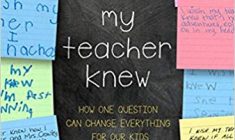Pastoral Care
Listening and Building Relationships
Recently the boys in Year 5 viewed and discussed a TED talk called the ‘5 ways to listen better’ which focused on the importance of listening skills. It provoked a lot of interesting conversation and reinforced the skills that the boys develop through our Second Step social skills program.
As we know from our own experience, effective listening skills are important to enable us to interact successfully with each other. At Newington, we explicitly teach our students to listen to others and we provide them with meaningful opportunities to be heard and valued through the use of paddle pop sticks (to choose and group students), thinking routines (to promote deeper thinking and collaboration) and class/school surveys such as the School Culture Survey completed at the end of last term.
A new initiative that we’ll be introducing to our boys in Years 2 to 6 over the coming week (some boys are already familiar with this) is the opportunity to share, through a simple survey response, what that they wished their teacher or school knew (at the particular point in time or more generally). The survey format will allow students to be heard at times when they might feel like they don’t have the opportunity or would prefer to be ‘heard’ through a different medium than speaking.
The will be two generic surveys installed on each students iPad as a webapp. The I wish my teacher knew… survey will be class based and the I wish my school knew survey… will be about school in general. Initial response to these surveys has been very positive and insightful and we are hopeful that this will further enhance the community of learners that we have at Lindfield.
Surveys
I wish my teacher knew… – www.bit.ly/nclteacher
I wish my school knew… – www.bit.ly/nclschool
This concept stems from the work of Kyle Schwartz:
One day, third-grade teacher Kyle Schwartz asked her students to fill in the blank in this sentence: “I wish my teacher knew _______ .”
The results astounded her. Some answers were humorous; others were heartbreaking. All were profoundly moving and enlightening. The results opened her eyes to the need for educators to understand the unique realities their students face in order to create an open, safe, and supportive classroom environment. When Kyle shared her experience online, teachers around the globe began sharing their own contributions to #IWishMyTeacherKnew.
ABC News in America – https://www.youtube.com/watch?v=vjFe7zNY6ek
Active Listening at Home
The following information is adapted from the Beyond Blue website and further highlights the importance that parents, educators, employers and students should place on listening!
Communication is a key factor in any relationship, especially those with children. Listening is a communication skill that can bring greater connection, clarity and understanding to build positive relationships with children.
Active listening: Communication with Children
Communication is a key factor in any relationship, especially those with children. Active listening is a communication skill that can bring greater connection, clarity and understanding to build positive relationships with children.
Often when listening to children, adults may be distracted by something else, fidget, rehearse what they want to say in their head, interject before the child has finished talking/expressing themselves, or have closed body language. All of these things can cause misunderstandings and conflict, affect whether children may disclose sensitive information again and can damage relationships. Active listeners have the intent to listen to the complete message and its meaning by paying attention to what children are saying, how it is being said. It involves being aware of body language, voice inflection, overall attitude and the meaning of what children are saying to validate communication and help children feel supported and understood.
Why is active listening important?
By being active listeners, parents and carers can strengthen their communication and relationships with children by demonstrating interest, care and understanding. Some benefits of active listening for communication and relationships are:
- helping children to feel valued, connected, validated and understood
- building trust and credibility with a child
- helping clarify a child’s thoughts and feelings
- avoiding conflict and misunderstandings
- making it more likely a child will talk to you, express themselves and seek your views in the future
Actively listening to children can begin right from when they are born, as it is important that parents and carers communicate with babies through understanding their cues and body language. By paying attention to a baby’s body language or non-verbal cues, such as understanding different kinds of crying or noticing how a baby moves when they are distressed, parents and carers can understand what and how a baby communicates.
Skills tips: What does active listening involve?
Active listening is a skill that can be learned and practised. It can mean different things in different cultures, with some aspects needing to be altered but active listening involves the following aspects that need to be practised over time:
Give the child your full attention. This may involve stopping what you are doing (e.g. turning off the television, stopping cooking), moving away from a busy place or letting the child know you want to listen and will give them your full attention when you finish (e.g. when caring for another child). When you are talking to a child and you notice your mind is wandering, bring it back to what the child is saying. Prioritising time to listen actively and attend shows a child their feelings are important and that you are interested in what they are thinking and feeling.
Use your eyes to listen. Make eye contact and if possible, get down to their level to show them you are ready to listen.
Listen carefully to what is being said. Listen to both what the child is saying and their body language, without interrupting and avoiding questions that break the child’s train of thought. Focus on what the child is saying and the meaning behind it, rather than what you are going to say next.
Use encouragers. Show that you are interested by nodding your head, smiling or making other appropriate facial expressions, providing verbal encouragers such as “mmm”, “uh huh” or making comments like “I see”, “that sounds hard/tricky/great” to help encourage the child to keep speaking and engage in what they said.
Reflect the feeling. After the child has talked about a feeling, thought, experience, etc. use the opportunity to respond and gently describe in your own words what you think the child is feeling and why. For example, “You seem to be feeling a bit upset about not making the football team”. This can help demonstrate empathy (recognising, understanding and respecting the feelings of others) and understanding of the child’s feelings and thoughts.
Use pauses and silences. Resisting the temptation to fill silences is important when children are trying to think about what else they want to say, as it gives them time to think and respond.
Ask open-ended questions. Open questions (e.g. “What are you concerned about when you go to school?”) encourage more detailed responses where children can provide more deep and meaningful information.
Summarise. Summarising the child’s main points can demonstrate that you understand what they were saying and can allow an opportunity for the child to add something.
Make non-judgemental statements. It is important to refrain from judgement statements, such as “You feel scared about silly monsters at night”, that can prevent children from disclosing further information. Try to reflect or paraphrase what a child has said, in your own words in a non-judgemental way, for example “You feel scared about monsters when the lights get turned off”. This lack of judgement invites the child to tell you more about what they are thinking or feeling.
Choose words to start a conversation. You can begin active listening by using questions or statements such as “You seem to be feeling…about…”, “It looks like you feel…with…”, “You sound…at…”, “You seem…because…” An example might be “You’ve been sitting very quietly and hugging your teddy bear. It seems like you are feeling sad about something. Would you like to tell me about it?”
Like any skill, active listening takes time and practice to develop but is very rewarding for parents, carers and children. It is not only a skill that can help support healthy communication and strong relationships with children, but also with other adult relationships.
Pascal Czerwenka – Deputy Head of Lindfield
Sources
www.ted.com/talks/julian_treasure_5_ways_to_listen_better
ABC News in America – https://www.youtube.com/watch?v=vjFe7zNY6ek







